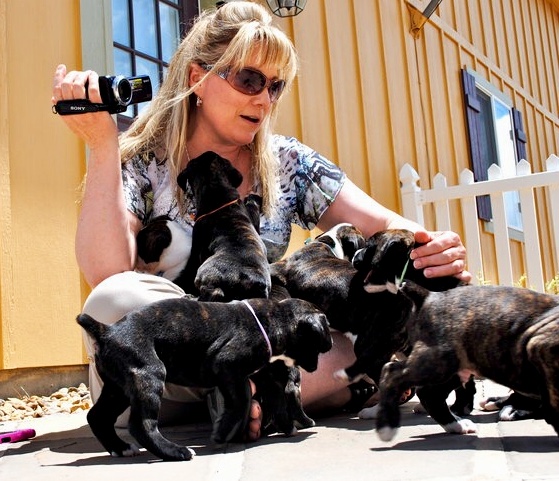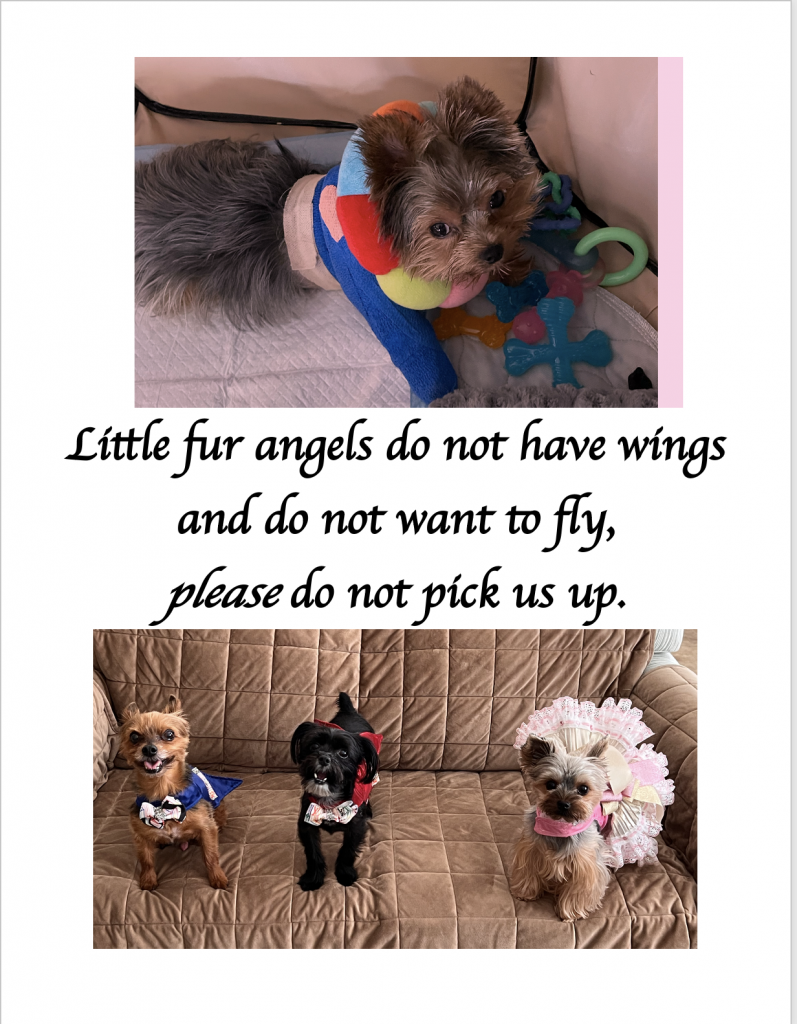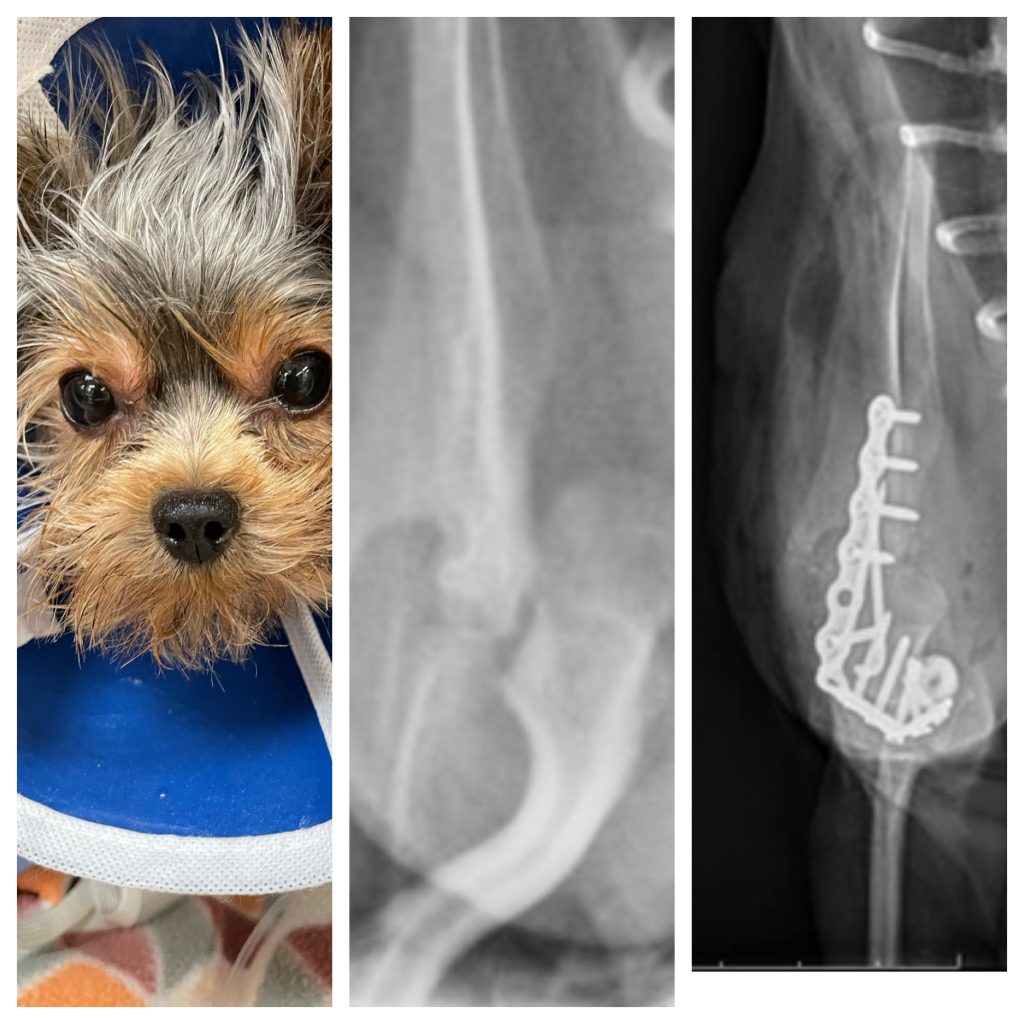Leah’s Take on Dogs and All Things Dog.

Book Review for Blueprint to a Happy Dog!
1-18-24: Part of my New Year’s Resolution, if you will, is to read or re-read many of the books that grace my bookshelves. I love actual books and reading them is such a treat for me. This will be the first of many blog reviews.

I chose to read Blueprint to a Happy Dog! This book was written by Norma Jeanne Laurette & Greg Ceci. It is one of 4 books that they have published. This book has been out since 2019 and it is a fantastic resource!
I have been learning from Norma Jeanne Laurette, along with Greg, through Canine Communication Studies since 2007. They have been amazing mentors for me, and I refer anyone looking to become a dog trainer their way. They showed me the light of training without fear or intimidation in a very detailed and easy to understand method. I had been introduced to this way of training but got to really learn this through Norma Jeanne’s dog trainer’s program. You can imagine how excited I was when they began writing books!! Greg and Norma Jeanne have over 4 decades of dog training experience between them. This includes behavior modification, fearful dog rehabilitation, reactive and aggressive dogs as well as a variety of other training and behavior needs. They have included brilliant slides from their presentations done in 2010 ACTT I K9 Fear and Aggression and ACTTII Aggression and Human Canine Bond.
This book is easy to read and well organized in that it takes you appropriately through how dogs learn and perceive their world. It is not meant to replace professional help; however, this is a great resource to help you get the full benefit of training or rehabilitating your dog. It can be a lot for a person to both learn a technique or concept and then in real time, use this with their dog as they learn. This book clarifies much of the technical side of the process. There is only so much time in a training session, having more in-depth explanation is so helpful.
Some of my favorite parts from this book:
- It’s Not Dominance (Beginning Page 9): They have a done a great job of breaking down what the Dominance Theory is and where it came from as well as how it has been disproved. They have provided credible and accurate resources backing up this chapter’s content. It is still being exemplified on some TV shows and many have no idea that science about Dominance in dogs has been updated and reformed.
- Positive Resource Control (Page 29) Explaining what dogs desire (which can vary from dog to dog) and how to use their desired resources to encourage and keep good behaviors from our dogs.
- Canine Motivation broken simply into helpful tips to decipher if the motivation is ‘I want it’ or ‘I want it to go away’. Of course, dogs can be complex, but this is a marvelous introduction into more accurately deciphering what our dogs are trying to say.
- Fearful Dog Steps 81-87: Listing a great strategy to work with fearful or conflicted dogs to help ease them into better coping mechanisms and desensitization.
- Learned Helplessness Page 109: Very complete description of Learned Helplessness which is commonly mistaken as a calm submissive state.
- Reading the Tail Page 1-27 –129. Great illustrations and depictions of dog tail use and posturing. Not all tail wags are friendly nor approachable.
- Steven R Lindsay’s 5 Behavior Reactions (Fight, Flight, Freeze, Fool Around, Forebear Pg 160)
- Trigger Stacking Explanation (page 216) this is good to understand, especially with behaviorally compromised dogs that seem to tolerate triggers sometimes and sometimes seem to lose it in the presence of the same triggers.
- Technology vs. dogs. —Put that phone down!!(Page 232.
This book is full of great information that is tediously backed up by listed resources. It was fun to read and review all the great facts listed and explored. I highly recommend this book; it contains a lot of the information from many of the handouts that I give to my clients. Very good resource for anyone with a puppy to an adult dog whether an easy fit or one with challenging behaviors. Great illustrations and photos to keep your interest peaked. A certain must have to help accent any dog ownership and or training program.
You can purchase this book through Norma Jeanne’s Canine Communication Studies at https://dogtrainingcareers.com/product/blueprint-to-a-happy-dog/ (Keep in mind it is listed in Canadian Dollars)

Christmas Canine Considerations- Safety Part 2, December 2023
- Re-puppy proof the house for the holidays. In our hustle and bustle of visiting, gift giving and baking it is easy to forget dangers that can harm our dogs. Baking chocolate is dangerous for our dog, as are electric cords from lights, tinsel, broken glass ornaments etc. The last thing anyone needs during the expensive holiday season is an expensive vet bill that could have been prevented.
- Candles can also be a danger with sweeping tails, and curious paws.
- Poinsettia Plants are poisonous so take care to keep your canine companions from having access to these beautiful plants!
- Mistletoe and Holly are also plants to avoid with dogs. Holly can cause nausea, vomiting and diarrhea. No one wants gastrointestinal issues and certainly not cardiovascular problems, so avoid mistletoe as well.
- Keep your Christmas tree secure by either putting a smaller tree up on a table when you have a puppy or placing an ex-pen (puppy playpen barrier) around the tree to help prevent disaster from opportunistic puppies or adolescents.
- Xylitol is becoming more popular as a sweetener and is very attractively sweet. This is also a danger for your dog. Beware of ingredients in anything that is sweet, including some peanut butter varieties.
- Watch exterior doors! In the hustle and bustle of guests and deliveries coming and going, there will be more escape opportunities as well.
- Some dogs are not into crowds. Create a safe place that you introduce your dog to well before the festivities commence.
- If your dog is going to be part of the party, make sure to keep an eye out for well-meaning guests that may be tempted to feed your pet ‘goodies’ they should not have.
- Purchase a Doggy CD. There are quite a few on the market and studies do show that soft music helps to calm your dog and you. Or find a good YouTube channel that has calming ambiance.
- Purchase a Doggy CD. There are quite a few on the market and studies do show that soft music helps to calm your dog and you. Or find a good YouTube channel that has calming ambiance.
- Some pets do not enjoy the noises associated with Christmas. Loud jingle bells, ripping paper, poppers and of course the upcoming fireworks for New Year’s Eve or other loud items may frighten or annoy your dog. Be mindful of this and provide appropriate retreat.
- However, you celebrate, please take care to consider your dog(s) and make it a great holiday season for all involved!

Canine Christmas Considerations- Gifts, December 2023
Statistics show millions of people include their canine companions in their gift giving during the holiday season. Here are a few great things to give or to do for your dog to really enhance their mental well-being.
- New Collar that is well made and less likely to break with a new id tag with up-to-date information: Too often we forget to check our dogs collars to make sure that they are in good shape and are secure. Tags should be up to date and include current address and phone numbers, including cell phone numbers.
- Upgrade to stainless steel or crock bowls to replace any plastic bowls. Plastic is harder to sanitize no matter what you feed. Get 2 sets so one can go in the dishwasher for sanitation. Even the best dog food has been found to carry harmful bacteria.
- Toys made of hard rubber such a, Kong’s or other hard rubber toys. Spending a little more on toys that are hard to destroy are safer for your dogs. Stuffed toys, ropes and squeaky toys made of latex or rubber should not be left unattended with you dog as they can ingest them. Stuffed toys and ropes that are eaten can easily cause obstruction. Chewing appropriate items is very stress relieving for your dog. Make sure to supervise your dog with any new item.
- Make time for your dog(s) every day, especially puppies. Spend at least 15 minutes per dog every day individually just petting, praising, training or playing. It is easy to put the dog at the bottom of the priority list during the holidays, but you just might save yourself destruction or attention getting behavior. This is time well spent and will help to lower both of your heart rates and relieve stress.
- Create a quiet place for your dog to go when guests come for gatherings. Though many people and dogs enjoy each other, there are those that don’t. Large groups can become overwhelming and even the best training and socialization can’t prevent trouble with over stimulation of a party atmosphere. An ounce of prevention is worth a pound of cure. Be mindful that well-meaning guests can inadvertently influence your canine in the wrong way such as encourage jumping or begging. Have an activity for your dog to do (Stuffed Kong) away from the festivities to help maintain good manners.
- If you want to give your dog special treats for the holidays, give treats made for dogs or food that is nutritious for them. Candy, cookies, alcohol, fried or greasy foods, rich holiday people food are not good for dogs. As a vet assistant, every year the holidays brough more stomach trouble related vet bills than any other time. Your dog will appreciate any treat, make sure its healthy for him/her.
- Teach a new trick. It will do both you and your dog good to exercise both your minds. Having a trick or two to show off to your visitors helps to reduce anxiety, gives your dog a job and is fun for you.
- Teach your dog to come when called and to wait at the door, it could save his/her life.
.

Tiny Toy Dogs and Potential Dangers of Picking Them Up. 6-3-23
As one that has always had big dogs, I have really come to love and cherish the little ones. Little dogs come in even tinier as puppies. If you really think about it, we are like a 3-5 story building to them. They are so tiny and cute that even the most restrained are compelled to pick them up. There in lies the danger. Most people do not know how to properly pick up a tiny puppy, are unaware of their unpredictable wiggles and strength for such tiny bodies and don’t realize how fragile they can be. One of my top recommendations for owners of the little dogs is to really be discerning about which friends and even family are allowed pick their tiny puppies. Puppies can be enjoyed on the floor and quite frankly, many of them really do not want to be picked up and held by everyone, which is OK and they should not be required to.
Recently, I experienced having a very good client with a very tiny Yorkshire Terrier puppy have the unthinkable happen. A visitor picked up her tiny puppy and accidentally dropped her. The resulting injury was a separated shoulder that after months of doctors visits, several surgeries, constant confinement and more visits, this baby is still trying to heal. No one intends for this to happen, we all want to enjoy our puppies and extend that enjoyment to those we know and care about. But, as in cases like I have just mentioned, the doctors visits, surgeries, medications, physical therapy etc runs into the thousands of dollars.

Please consider the following recommendations:
- Research and find an excellent pet insurance plan and sign your tiny pet up as soon as possible for it.
- Be very discerning about whether to allow people to just come and pick up your tiny puppy. The most careful and well meaning people can still have a problem. Have courageous conversations with them and deny their requests to pick up your puppy unless you are sure of their capability.
- Learn how to properly pick up your puppy securely and with full support so your puppy feels secure.
- Don’t be afraid to put up a sign to catch visitors that come in. Something as simple as Do not pick up the dogs to Little fur angels have do not have wings and do not want to fly, please do not pick us up. You can use a cute picture of your little dogs to help the association.
- Teach your puppy the basics in obedience skills and manners as soon as you get your puppy. Puppies can learn new things even as early as 8 weeks old.
- Teach Puppy to be picked up so that he/she is ready when you give the warning cue “Elevator” or “Going Up” or “Pick you up” etc. Practice this with rewards based training and keep it as positive as possible. Don’t over do it keep practice sessions short so that it does not become a strain on either of you.
- Contact me if you would like to have professional help in training this process.
Enjoying our little dogs to the fullest extent with safety and kindness in mind is a best practice. The littles are very cute and enticing but also fragile and can be injured easily from a fall.
Further ensure their safety by teaching them to use pet stairs when getting on or off furniture. Put Bells on their collars or harnesses so that you are aware of their whereabouts to hopefully prevent them from being stepped on. Have a great puppy playpen with all their necessities in there to have a great place to safely put them in to keep them safe when you can not supervise.


My Personal Experience with the desire to Chew 4-11-22
So recently I have now had my second go around with a less than lovely oral surgical procedure for myself. It really gave me a perspective about puppies that I had not expected. The procedure itself was bad enough to request to be unaware while it was happening (Nitrous Oxide to the rescue) The healing process was also very interesting. Yes, I received the necessary pain medications to help me get through the grueling first few days. And no solid food or excessive talking was also a tough deal to get through.
The interesting discovery that I made was that as my mouth was healing, it occurred to me what teething puppies experienced to motivate their need to chew. I experienced stinging pain but also it seemed to be a combination of both pain and sensitivity. I was told under any circumstance not to chew or bite anything for a month and I have to tell you it was hard to not be able to get relief from this. Yes, Tylenol and Ibuprofen to the rescue but our puppies do not get this. I had a very big desire to chew on or bite something to help relieve this feeling.
I realize that we can not say for certain exactly what puppies experience during teething but I have to say if it is anything close to what I experienced, if even only for a short period of time, I have an even deeper sympathy for them. I have always encouraged puppy owners to keep a variety of appropriate recreational chew items handy, and to micro manage puppies that are out of their confinement to help to keep them successful in not destroying furniture, cabinets, vinyl flooring, baseboards etc. These need to be safe, like as big as puppy’s head to help prevent them from thinking about swallowing them, as well as given with supervision. There are puppies that will appropriately chew on items in the way that we expect and there are those puppies that are super power chewers and swallow what ever they can get down their throats. Dogs really do not know what is inherently good for them. They just know that their mouth is uncomfortable (or they are anxious or have extra energy or are bored) and chewing satisfies this need.
I have my 2 favorites that I recommend. I typically recommend larger then most of the manufacturers tend to recommend. I want puppies to really have to use up their energy by picking up and manipulating heavier items, within reason of course.
Extreme Kongs: I love them! Pure and simple. What can you not love about made in America and actually made in Colorado, where I am from. They come in several sizes. I always recommend the extreme black Kongs for all dogs. They are durable and last for most dogs, their lifetime and then some. Of course there are the very few exceptions that chew up literally everything. All recreational chew items should be supervised. I wish all dogs were fed daily out of their Kongs and not out of their food bowls. In the real world, we all have lots of better things to do then constantly stuff Kongs for our dogs. But at least trying give meals in a Kong at least several meals a week will be such a great mental stimulation for any dog.
Split Antlers: They can be found everywhere. Dogs do better when they are split and can reach the nutritious marrow. Again, they should be sourced from the USA for safety and quality. They should be as big or bigger than your dog’s head and given with supervision. I like them because they do not seem to stain or smell. I have been giving them to my own dogs for over a decade now. You will want to take them when they are worn down enough to be a swallow or choke hazard. I usually keep a healthy supply for my avid chewing boxers.
To help your dog accept and even learn to love their confinement, I recommend only giving their recreational chewing items in their pen, crate or other confinement area. This helps to raise the value of the area as a desired resource.
As with any toy, supervision is a must especially in the beginning. However, do make sure your puppy or dog have chewing opportunities unless you have a resource guarding dog or one that wants to consume and swallow everything and these are too lengthy to be covered in this entry.
Who ever said you can’t by happiness forgot little puppies…. Gene Hill

How did it all begin? 3-13-22
Back in 2002, our family adopted a boxer from a Colorado Boxer rescue group. We had intended to rescue and found a beautiful flashy boy that we fell in love with. We add him to our home of 2 other boxers my husband Ron and our 2 young teens. Not long after the rescue we found out how much a handful this guy really was. Our attempts to ‘fix’ his issues were met with the clear understanding of how much we really didn’t know, though we thought ourselves very dog savvy. Bohdi not only fought with but pretty severely beat up our elderly boxer, nearly 12 years old, and had severe separation anxiety.
We sought help from local trainers who told us that Bohdi was ‘dominant’ and that we needed to take control and be the ‘pack leader’. We did not want to send him back to the rescue and were bound and determined to keep him and ‘help’ him. So we listened to the trainer that we had hired. They told us to use a pinch collar and to alpha roll him and to pressure him to give in to us when feeding, moving about the house and on walks. Much to our dismay, Bohdi became much worse and eventually became a fear biter and his aggression escalated. Again the trainer suggested that we put Bohdi in ‘protection’ training to give him an on and off switch to help control the aggression. It soon became exceedingly clear that we were clearly not helping him. Bohdi would shut down during the ‘protection’ training and the separation anxiety also became worse.
Bohdi chewed through chain link, chewed out of both an airline kennel and a wire kennel. We had to keep him separated from our senior dog that left over rainbow bridge not long after.
Finally after ending the training and just trying to manage Bohdi with confinement, extreme caution and creatively patch worked schedules, I came across a local dog training company that offered to teach people how to be a professional dog trainer. The best thing I ever did was to sign up for this and choose the online supplemental training to do in conjunction with the hands on courses.
Much to my surprise, the online courses brought me down a completely different train of thought that took me away from training devices such as pinch, choke and shock collars. Enter Norma Jean. Through her fabulous online course I learned an alternative to force and intimidation. I learned that the dominance based theory was becoming increasingly unpopular and that even AVSAB (American Veterinary Society of Animal Behavior) no longer subscribed to this idea.
I discovered through learning proper deciphering of canine body language, that Bohdi was actually fearful and lacked confidence. His aggression was stemmed from anxiety and lack of confidence. We had made him very much worse by our well meaning attempts to make him better.
Once we realized the truth about Bohdi, we immediately changed our course of action. We stopped using the pinch collar, began training him with rewards based training and took all pressure off of him. Bohdi finished his life with us happy and content.
After this very hard lesson, I vowed to become better help for people with troubled dogs. Though, at the time of this blog and also back then, none of the 50 United States has requirement for people to call themselves Professional Dog Trainers. I have always vowed to go above and beyond to continue to educate myself and surpass the continuing education requirements for each of the certificates and accolades that I have earned.
I must say that I wish I could back and do it differently for Bohdi. As dog’s do, Bohdi continued to try for us no matter what happened in his life. I am thankful for him and that he sent me on a journey to be the better help for dogs and the people that love them. I will never stop learning and working to always be the better help. I am thoroughly for rescue and encourage others to rescue and adopt. However, do involve training no matter how good the dog may seem. Reward based training increases your bond, trust and relationship and helps your dog to acclimate to new life through fun and exciting activities involving learning with you.
Do the best you can until you know better, then when you know better, do better. May Angelou